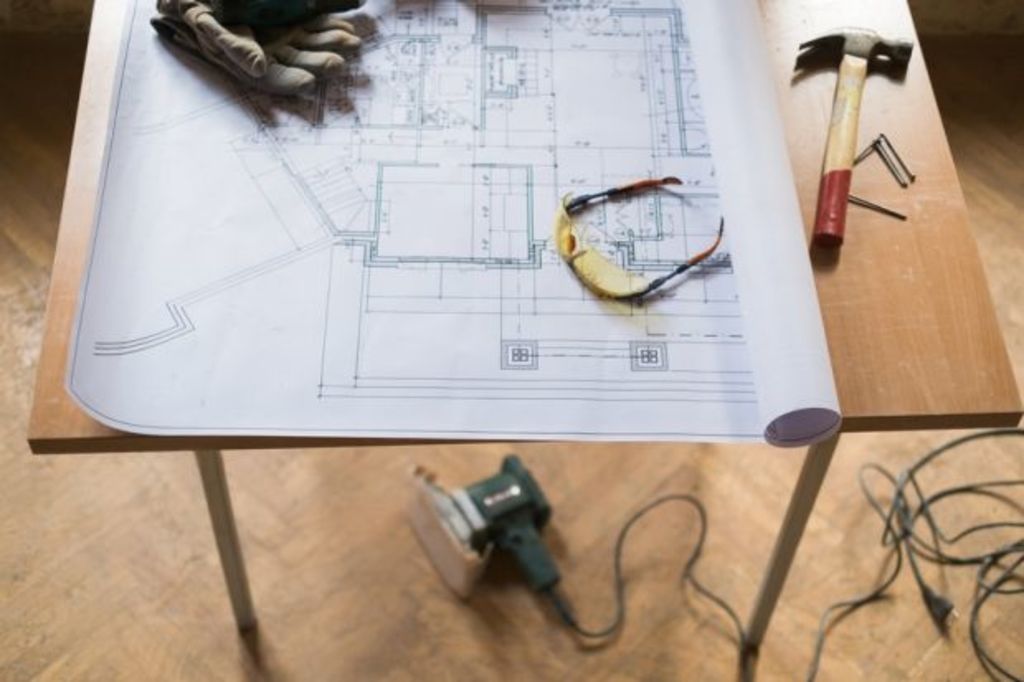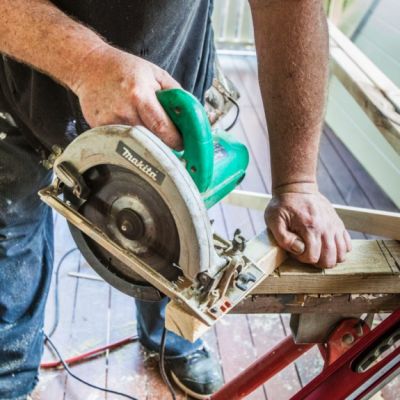Extension, rebuild or sale? How to decide whether to upgrade your Canberra home

Extend, knock down and rebuild, or sell up and buy somewhere else?
That’s the dilemma often facing homeowners who become dissatisfied with their standard of home living.
There are persuasive arguments in favour or against any one of the options, but the deciding factors can often be reduced to: do you like the area where you live; and can you achieve what you want without over-capitalising?
Steve Andrea of the eponymous Steve Andrea Architecture, based in Griffith, is often commissioned by clients in the inner south, with many of those projects involving homes with heritage considerations.
“One of the perennial decisions for homeowners is deciding when to renovate and when to detonate,” he says.
“We aim to help them unravel all the issues and to isolate what they want to achieve and why.”
Andrea says a key motivator to stay and extend is the actual location and how integrated homeowners feel with their local community.
“A decision to move is often taken off the table if children are already enrolled in schools and have great networks of friends,” he says.
Andrea also explodes one myth that suggests all home extensions increase the footprint of a home.
“We’ve worked on heritage homes where we’ve effectively reduced the size of a home,” he says.
“That’s involved forensically undoing a series of previous extensions that have, perhaps, been poorly thought through to bring us to a point where we can start again from, effectively, ground zero.”
His commissions range between $200,000-$2 million with many in the range of $500,000-$1 million.
Matt Hall, of Phillip-based Build Professional, says clients contact him after they come to the conclusion their existing home is either “dilapidated”, “tired” or just “old”.
“They realise they need more space for their growing family and they want to bring themselves up to a contemporary living standard,” he says.
“A lot of the homes I get called into assess have been built in the 1960s and 1970s. Many of those have inherent capacity to be remodelled and extended.”
Hall says clients are very educated and use a variety of online and traditional sources to think through what they want to achieve in remodelling their homes.
“Many of them say they’re up for it, but are expecting plenty of dramas, because that’s what they see on the popular television shows,” he says.
“I tell them that’s not the way it has to be in a properly planned and scheduled project – and we aim to deliver a stress-free experience.”
Hall says extensions and renovations cost between $50,000 and $1 million or more, but many fall into a band around $300,000.
Agent Holly Komorowski, of home.byholly, says many homeowners decide to stay and extend because of the significant costs involved in selling and buying.
“Stamp duty, commissions and solicitor’s fees and removal costs can add up to a substantial sunk cost and many people look at the cost-benefits and decide to stay put and extend,” she says.
Komorowski says home extenders who may have an eventual sale in mind should aim to resist the temptation to be too personal in the expression of their projects and aim for timeless appeal.
“Think about what the market is looking for – it’s two living areas, great kitchens and bathrooms and enhanced thermal performance,” she says.
“In a sense, you’re trying to future-proof your home’s commercial appeal.”

Hard work pays off
Just over 12 months ago Ravi Yalamanchili and Deepika Munnangai, above, bought a dark, cold, boxy, three-bedroom, one bathroom home in Ainslie.
“Its only real bright spot was a beautiful magnolia tree in the front yard,” Ravi says.
The couple decided the bones of the home, its 701-square metre block and a prime inner-city location, could sustain a substantial extension and remodeling.
Deepika, with little previous experience, took on the daunting project management task of transforming the home from its humble roots into a four-bedroom, two living area masterpiece with a detached, self-contained studio.
“We went through about 15 iterations of the design before we reached a plan we were really happy with,” Deepika says.
Construction began in January and by April was substantially completed.
“It was hard work, but I really enjoyed it and learned so much,” Deepika says.
“You have to be prepared to make mistakes, but as long as you stay focused on the big picture, you’ll get there.”
The couple enjoyed the journey so much, they have decided to do it all again in what could be the beginning of a new career for both of them.
Their house at 4 Mccoll Street is for sale.
Cover property

A sympathetic extension and remodelling project has transformed a tired, old Ainslie home into a sparkling gem that reflects the highest standards in contemporary living.
The building began life some 60 years ago as a typical three-bedroom, one-bathroom brick and tile home – characterised by those qualities Canberrans know only two well – boxy rooms, a lack of light and extremes of temperature.
New homeowners have expanded the floorplan into a four-bedroom model with two living areas and have carried that transformation through into an old garage that’s been converted into a self-contained studio that would suit guests or extended family.
Space is the overwhelming impressions inside the residence and light floods in from big timber framed windows and doors and strategically placed skylights.
A central kitchen is highlighted by an island bench and stainless steel appliances. Bathroom spaces are straight out of a lifestyle magazine.
There is a strong connection with the outdoor entertaining spaces that are set amid striking landscaped grounds that include a landscaped pond and bridge that leads to a barbecue area.
Auction: Saturday, June 17, 10am, onsite. Inspect: contact agent, Stephen Bunday, LJ Hooker Dickson, 0416 014 431.
We recommend
We thought you might like
States
Capital Cities
Capital Cities - Rentals
Popular Areas
Allhomes
More









